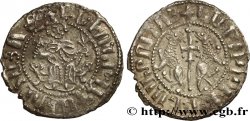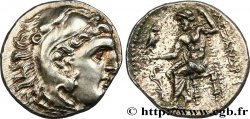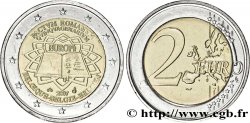Live auction - fwo_1054294 - OMEYYADES - HASHIM Dinar d’or 735 Syrie, Damas
得先注册又得到批准才可以报价。为了报价注册. 客户应该得到公司允许,那种过程需要 48 个小时。别等出售结束那一天才登记。您报价的话等于您赞成买那物品,而且按« 保价 » 证明您接受 cgb.fr 因特网拍卖使用法.
报价时只可以出全数值欧元总额。物品描述也说明销售结束时间,结束后出价都不会生效。 报价命令转达有时变动,等到最后秒钟增加否决的可能会。想多了解的话请注意 因特网拍卖常问
最高出价方将支付18%的不含税的拍卖费用
最高出价方将支付18%的不含税的拍卖费用
种类 Dinar d’or
日期: AH. 118
日期: 735
铸币厂名称/城市 Syrie, Damas
材质 gold
纯度、成色(用角密度) 1000 ‰
直径 20 mm
模子方针 6 h.
重量 4,25 g.
稀少度 R1
正面
正面的说明书 Légende circulaire ; au centre, légende en trois lignes.
背面
背面的说明书 Légende circulaire ; au centre légende en trois lignes.
评论
Le nom du dinar vient, par le Syriaque, de denarius aureus (denier d'or). Créé en 696-697 (an 77 de l'Hégire) par le calife Abd el Malik, il a pour modèle le solidus byzantin. Longtemps frappé uniquement à Damas, la capitale, il est alors inutile d'indiquer l'atelier sur les pièces. La masse choisie, 4,25 grammes environ, est fondée sur la masse arabe d'un metqäl, mais correspond en même temps à la moyenne des masses d'un assez grand nombre de solidi alors en circulation donc un peu usés et n'ayant plus leur masse théorique de 4,5 grammes. D'après la loi dite de Gresham - la mauvaise monnaie chasse la bonne - cette très légère différence devait être un élément favorable à une rapide diffusion du dinar, au détriment du solidus..
The name of the dinar comes, via Syriac, from denarius aureus (gold denarius). Created in 696-697 (year 77 of the Hegira) by the caliph Abd el Malik, it is modeled on the Byzantine solidus. For a long time minted only in Damascus, the capital, it was then unnecessary to indicate the mint on the coins. The chosen mass, approximately 4.25 grams, is based on the Arabic mass of a metqäl, but at the same time corresponds to the average of the masses of a fairly large number of solidi then in circulation, therefore a little worn and no longer having their theoretical mass of 4.5 grams. According to the so-called Gresham's law - bad coin drives out good - this very slight difference was to be a favorable element for a rapid diffusion of the dinar, to the detriment of the solidus.
The name of the dinar comes, via Syriac, from denarius aureus (gold denarius). Created in 696-697 (year 77 of the Hegira) by the caliph Abd el Malik, it is modeled on the Byzantine solidus. For a long time minted only in Damascus, the capital, it was then unnecessary to indicate the mint on the coins. The chosen mass, approximately 4.25 grams, is based on the Arabic mass of a metqäl, but at the same time corresponds to the average of the masses of a fairly large number of solidi then in circulation, therefore a little worn and no longer having their theoretical mass of 4.5 grams. According to the so-called Gresham's law - bad coin drives out good - this very slight difference was to be a favorable element for a rapid diffusion of the dinar, to the detriment of the solidus.








 结束日期
结束日期  对产品描述纠错
对产品描述纠错 打印
打印 分享我的选择
分享我的选择 提问
提问 Consign / sell
Consign / sell
 产品介绍
产品介绍










